Features
Tackling PFAS from Many Angles

NIEHS Superfund Research Program (SRP) grantees use innovative approaches to understand how people are exposed to per- and poly-fluoroalkyl substances (PFAS) and potential health effects. They study how PFAS move and change in the environment and how to clean them up to better protect human health. They also work closely with affected communities to communicate potential health risks and empower individuals to reduce their exposures and protect their health.
Understanding how PFAS Affect Health
Because of the large number of PFAS, it is difficult to study the potential health effects of each one. Nevertheless, SRP-funded researchers are uncovering ways exposure to some PFAS may affect the body and harm health. They are also developing new tools to prioritize specific chemicals within the PFAS group for further study.
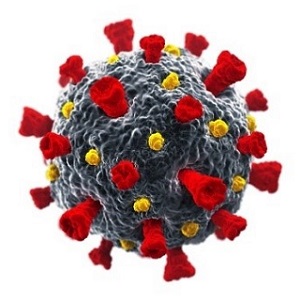
Researchers at the University of Rhode Island (URI) SRP Center study the link between PFAS exposure and metabolic effects. Led by Philippe Grandjean, M.D., D.M.Sc., they follow a population in the Faroe Islands, and reported that early-life PFAS exposure alters metabolic hormones and adipokines , which are signaling molecules produced by fat cells, later in childhood. They found similar relationships between PFAS levels and increased lipid concentrations . Together these findings point to a mechanistic pathway linking PFAS with metabolic outcomes . They also found that several PFAS chemicals were negatively associated with birth size and with increased thyroid hormone concentrations .
URI researchers have reported similar effects in studies with rodents. For example, a team led by Angela Slitt, Ph.D., linked PFAS exposure with fatty liver disease and metabolic disorders , reporting that PFAS may increase risk of metabolic and inflammatory disease induced by diet. They also linked PFAS with changes in fat cells - a finding that may help explain observations in rodents and humans.
At the North Carolina State University (NCSU) SRP Center , researchers led by Jane Hoppin, Ph.D., are characterizing PFAS exposures among rural communities along the Cape Fear River in North Carolina. They are also measuring changes in thyroid hormones and effects related to thyroid function, including changes in weight and cholesterol.
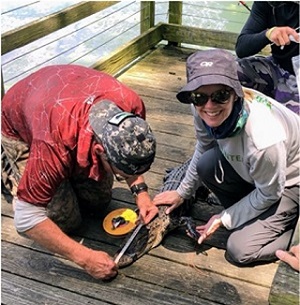
The team recently received supplemental funding from SRP to expand their project's scope to include research on how exposure to PFAS can affect the body's immune response to the SARS-CoV-2 virus. To explore the underlying mechanisms by which PFAS harm the immune system, researchers led by Seth Kullman, Ph.D., are using mice, zebrafish, and human cells to look at changes in immune cell development and antibody production. NCSU SRP Center researchers are also studying alligators living in PFAS-contaminated water to understand the potential immune effects. According to the researchers, alligators may be useful for understanding how PFAS harm animals and humans alike.
The team also developed a new high-throughput tool to quickly characterize how PFAS may be transported within the body and potentially cause harm based on how different PFAS interact with and bind to proteins in the body. This information can help identify their chemical structures, and allow researchers to prioritize PFAS for further toxicity studies.
Researchers led by Bernhard Hennig, Ph.D., at the University of Kentucky (UK) SRP Center , reported that mice exposed to both polychlorinated biphenyls and PFAS had worse liver injury, fat accumulation, and markers of cardiovascular risk compared to mice exposed to each chemical alone.
At the Boston University (BU) SRP Center , Jennifer Schlezinger, Ph.D., and team revealed the important role of the peroxisome proliferator activated receptor , and therefore genetic variation among individuals, in how PFAS affect metabolic outcomes. They also developed a novel study design that offered new insight into the effects of PFAS on cholesterol regulation in the liver .
Detecting and Characterizing PFAS
Identifying PFAS and characterizing their concentrations in the environment, as well as how they move and change over time, are critical steps to understanding potential environmental and health risks and to developing remediation strategies.
For example, URI SRP Center researchers, led by Rainer Lohmann, Ph.D., sampled PFAS in several indoor environments using thin sheets of inexpensive polyethylene, a type of plastic. After analyzing the samples, they concluded that indoor air is an important exposure pathway for PFAS.
URI trainee and 2018 K.C. Donnelly Externship Award recipient Jitka Becanova worked with Robert Hurt, Ph.D., of the Brown University SRP Center, to create a new device for sampling PFAS in water. The device consists of nano-scale sheets of graphene arranged into cylinders that absorb certain PFAS, which are later extracted for analysis.
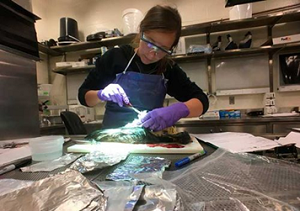
To investigate the origin of PFAS in drinking water sources, URI SRP Center researchers are looking for telltale signs of certain compounds in water. Elsie Sunderland, Ph.D., and trainee Bridger Ruyle analyzed surface water samples near Cape Cod, Massachusetts, and determined that while some of the PFAS likely came from firefighting foams, a substantial portion came from unknown sources.
The teams also examined PFAS in marine wildlife. After testing the livers of nearly three dozen seabirds along the East Coast they identified high concentrations of PFAS . Slitt, Sunderland, and colleagues also found that in pilot whales , PFAS appear to bioaccumulate in tissues rich in phospholipids, a class of lipids that play important structural and metabolic roles in cells.
At the NCSU SRP Center, David Muddiman, Ph.D., heads the Core of Advanced Platform Technologies Used for Remediation and Exploration (CAPTURE). The project combines analytical expertise and equipment from several NCSU programs to enable detection and rapid, comprehensive assessment of PFAS.
Looking at pine needles , the team is trying to understand the evolution of PFAS in North Carolina over the last 50 years. They detected over 70 different PFAS with clear patterns of decreasing concentrations farther away from PFAS sources and different compositions over time.
Under the leadership of Antonio Planchart, Ph.D., NCSU SRP Center researchers are also investigating PFAS accumulation and toxicity in aquatic food webs , with the goal of better understanding the exposure risk to people who consume fish.
Researchers with the NCSU and Texas A&M University (TAMU) SRP Centers tested an analytical technique that combines ion mobility spectrometry and mass spectrometry to rapidly detect various organic pollutants, including PFAS and their degradation products. The work builds on earlier research showing that the technique can rapidly characterize PFAS , including PFAS in firefighting foams .
When an industrial fire outside of Houston required using firefighting foams, TAMU SRP Center researchers assessed PFAS contamination in surface waters of the Houston Ship Channel and Galveston Bay. Led by Center Director Ivan Rusyn, Ph.D., the team used ion mobility-mass spectrometry to identify and characterize PFAS in those samples.
The TAMU SRP Center also dedicates research to a PFAS called GenX, and specifically its effects on plants. After exposing two species to the chemical, Pierce Jamieson, Ph.D., and colleagues found that GenX accumulated in tissues , which likely inhibits growth and photosynthesis and induces oxidative stress.
Researchers at the University of Arizona SRP Center , led by Mark Brusseau, Ph.D., found that soils are a significant reservoir for PFAS . They are also developing modeling tools to predict how PFAS move through the subsurface, while exploring how molecular structure and other contaminants affect that mobility. The team found that the interface between air and water is an important area of study for better understanding PFAS transport.
At the Dartmouth SRP Center , Director Celia Chen, Ph.D., received a time-sensitive award to assess PFAS in tissue samples . In addition to better understanding potential human exposure through fish consumption, researchers will also evaluate the success of a PFAS remediation project underway in the region.
SRP researchers are investigating the presence of PFAS in drinking water as well. For example, Duke University SRP Center Co-Director Heather Stapleton, Ph.D., is leading a team of researchers to collect samples of drinking water and surface water, as well as blood from residents, along the Haw River in North Carolina. Their aim is to determine the source of PFAS and the risk of exposure to the community.
At the UK SRP Center, researchers led by Kelly Pinnell, Ph.D., are examining aging piping systems as a potential source of PFAS exposure in eastern Kentucky. One team developed a method that involved liquid chromatography-tandem mass spectrometry to detect various PFAS compounds in drinking water. Another team developed a gel-based sensing tool to estimate concentrations of PFAS in water.
UK SRP Center researchers led by Andrew Morris, Ph.D., looked at PFAS in human serum and discovered regional differences in PFAS exposures among Kentucky residents who were receiving care at state hospitals.

In the small business realm, AxNano , funded by SRP, is exploring PFAS detection methods that are more affordable and efficient than traditional mass spectrometry. To that end, they have developed a portable tool that relies on nanoparticles to quickly detect PFAS in samples.
New Strategies to Clean Up PFAS
With support from SRP, researchers are developing innovative tools and technologies to clean up PFAS in the environment, reduce their toxicity, and protect human health.
At the TAMU SRP Center, researchers led by Timothy Phillips, Ph.D., developed a therapeutic sorbent technology that can bind to hazardous chemicals in the body after exposure, reducing their uptake and bioavailability. The team demonstrated that their clay-based edible sorbents can strongly bind specific PFAS and mixtures of PFAS , and protected against PFAS toxicity. They are also exploring how these sorbents can be used to clean up contaminated sites. For example, in greenhouse studies they observed that the clay sorbents can tightly bind PFAS in soil and reduce their uptake by plants .
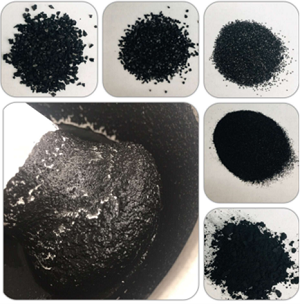
Using computational approaches, NCSU SRP Center investigators are evaluating different carbon-based sorbents for PFAS removal. Led by Detlef Knappe, Ph.D., the team is exploring different particle sizes of granular activated carbon to determine which size can best bind with PFAS and understand mechanisms of PFAS adsorption.
UK SRP researchers are developing sorbent materials that can clean up PFAS from water . By combining iron oxide nanoparticles with polymers that can respond to environmental changes, such as temperature , they fine-tuned sorbents to more efficiently bind PFAS. They are treating these sorbents with ultraviolet radiation to improve their ability to remove PFAS from drinking water. The team is also adapting their materials to treat wastewater , which has high levels of total dissolved solids and other contaminants.
A new cohort of SRP-funded individual research projects, listed below, are combining bioremediation with novel materials to enhance the speed and efficacy of PFAS treatment, while offering low-energy, sustainable solutions for water, soils, and sediments.
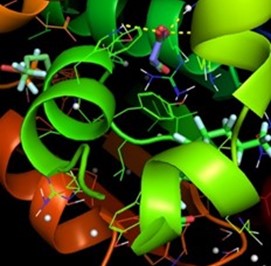
- The State University of New York at Buffalo is developing a two-step approach using graphene metal nanoparticles and enriched bacterial cultures to break down PFAS into biodegradable forms.
- University of California (UC), Riverside scientists are exploring how nanomaterials powered by solar electricity can accelerate the activity of bacteria used to clean up halogenated contaminants, including PFAS.
- At Princeton University , researchers are developing ferrihydrite nanoparticles to stimulate bacterial breakdown of PFAS in drinking water.
- Researchers at TAMU AgriLife Research are designing a system using nanotechnology to enhance the capacity of fungi to break down PFAS.
- Yale University is designing nanomaterials to bind to PFAS and enhance the ability of hemp plants to take them up.
Technologies developed by SRP-funded small businesses, listed below, also have the potential to remove PFAS from contaminated sites.
- Bluegrass Advanced Materials, LLC is developing smart flocculants that bind to PFAS and create aggregates for filtration and removal.
- Cyclopure, Inc. developed materials that convert cyclodextrins, derived from corn starch, into highly adsorbent materials that can remove PFAS and other pollutants from drinking water. They were recently awarded clearance to sell their filters for use in common commercial tabletop pitchers. According to the team, these affordable filters can provide up to 65 gallons of PFAS-free water.
-
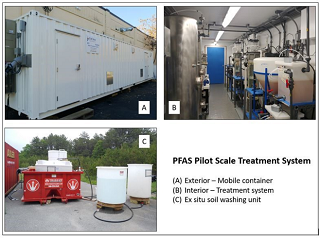
EnChem’s technology removes PFAS from water and concentrates it for destruction using UV lights in a treatment trailer. (Photo courtesy of EnChem Engingeering) EnChem Engineering, Inc. is testing a transportable PFAS-destruction unit to remediate soils and water at sites in New England. They have demonstrated 98% PFAS removal from soil. According to the team, their approach is more efficient than existing techniques with little to no waste and offers cost savings.
- Lynntech, Inc. has designed a continuous removal and disposal system that binds and breaks down contaminants into harmless byproducts. They are using this technology to develop a system to decompose PFAS in water.
- Microvi Biotechnologies, Inc. is building on the development of a novel computational platform for predicting the complex, dynamic interactions between microbial ecosystems and hazardous contaminants in the environment, including PFAS, to improve remediation biotechnologies.
- Weaver Labs, LLC is developing a high affinity sorbent to remove PFAS from groundwater. In preliminary laboratory studies, their sorbent can bind PFAS more effectively than traditional technologies, such as activated carbon.
Engaging With Communities and Communicating Risks
SRP grantees engage with community members, regulatory partners, and lawmakers by sharing research results and educational resources they can use to reduce exposure to PFAS and improve health.
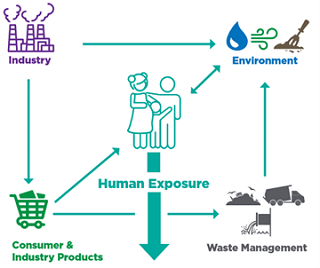
At the Dartmouth College SRP Center, researchers created a fact sheet to share information about PFAS with communities in New Hampshire. The material explains what PFAS are and how people are exposed to them and provides steps people can take to reduce their risk of exposure.
Duke University SRP Center researchers, led by Stapleton, hosted a virtual town hall in Pittsboro, North Carolina, to provide an overview of their research study on PFAS exposure in the Haw River area and to understand community concerns. The team shared results and implications of their study, which tested residents' blood, drinking water, and river water for PFAS contamination.
Lee Ferguson, Ph.D., who leads the Duke SRP Center Analytical Chemistry Core, spoke about the initial detection of the PFAS chemical GenX in the Cape Fear River on the 'Rate of Change' podcast , hosted by the Pratt School of Engineering at Duke. Ferguson also discussed the use of non-targeted chemical analysis to detect a wide variety of environmental contaminants.
In a similar activity, Ferguson and University of North Carolina at Chapel Hill (UNC) SRP Center researcher Kathleen Gray, Ph.D., collaborated on a SciComm Lunch and Learn to discuss PFAS testing in North Carolina. The collaborators also shared some of the challenges they faced when communicating results and risks to the community.
In an episode of the Talking PFAS podcast, University of California, Berkeley SRP Center researcher Andres Cardenas, Ph.D., shared findings from his research linking PFAS and weight gain. The NIEHS-funded study investigated the extent to which PFAS are associated with weight gain and body size and evaluated whether a lifestyle change protects health.
A team at the NCSU SRP Center created the PFAS Hub: Community Resource Page , which includes infographics and resources for the community to learn more about what PFAS are, how people are exposed to them, and how to reduce exposures. They also co-hosted #PFASComm , a two-day training and competition for SRP trainees, focused on improving communication and engagement skills to share PFAS science with affected communities.
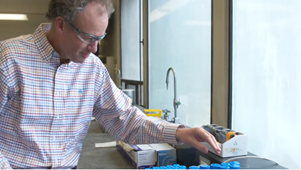
At the URI SRP Center, researchers developed a variety of outreach and communication tools, including fact sheets and a video series , to share information about PFAS. URI also hosted the PFAS in Our World virtual conference, led by center trainees, to explore how the next generation of scientists can tackle the challenge of PFAS. The team hosted a similar webinar series titled Let's Talk about PFAS .
URI SRP Center scientists are also using the Digital Exposure Report-Back Interface , developed by the Northeastern SRP Center and the Silent Spring Institute, to communicate results of PFAS testing to private well owners on Cape Cod, Massachusetts. The team is conducting interviews and focus groups with participants to learn more about their communication preferences to further customize reports.
Purdue University researcher Ellen Wells, Ph.D., and collaborators launched the Distance Education and Training on Emerging Contaminants and Technologies program, funded by an SRP Occupational Health and Safety Training Education Programs on Emerging Technologies grant. They are developing online training modules and in-person research experiences for education on emerging contaminants, including PFAS, and technologies for graduate students and industrial hygienists.
Informing Decision-Making
SRP-funded research is being used to help inform health protective standards for PFAS. Grantees also provide expert testimony and serve on advisory boards to ensure the science on PFAS can be used by decision makers.
For instance, several SRP researchers recently testified before governing bodies. Sunderland and Peter Jaffe, Ph.D., who leads an SRP-funded individual research project at Princeton University , testified on December 7, 2021, at a congressional hearing about PFAS . Sunderland and Jaffe discussed how federal research and development can better inform regulations and new methods for dealing with PFAS in the environment.
Slitt presented before the Rhode Island General Assembly about potential health effects resulting from PFAS exposure , noting that thousands of these compounds are commercially available. Research from Grandjean and colleagues showing changes in antibody response with PFAS exposure, is being used by the U.S. Environmental Protection Agency (EPA) to develop safe exposure limits for PFAS in drinking water.
Weisueh Chiu, Ph.D., of the TAMU SRP Center, and East Carolina University's Jaime DeWitt, Ph.D., a collaborator with the NCSU SRP Center, participated in an EPA Science Advisory Board to review the scientific methods the agency will use to set drinking water limits for PFAS.
NCSU SRP Center researchers also contributed to the findings and recommendations of the North Carolina PFAS Testing Network tothe North Carolina General Assembly.
The National Academies of Sciences, Engineering, and Medicine appointed multiple SRP researchers to serve on a committee that informs clinical guidance on the chemicals. Committee members met several times last year with community stakeholders to better understand the needs of their constituents. One urgent community request called for PFAS blood tests to become part of routine preventive health care.
Carol F. Kwiatkowski, Ph.D., and colleagues at the NCSU SRP Center described the scientific basis for managing PFAS as a single chemical class. They also offered options for how governments and industry can apply the class-based approach. Similarly, Lohmann and colleagues proposed strategies for grouping PFAS to help inform decisions made about these chemicals.
Boston University SRP Center researcher Wendy Heiger-Bernays and URI's Sunderland collaborated with others to describe knowledge and gaps in understanding related to PFAS exposure pathways . The article grew out of a panel event during the 2019 SETAC North America Focused Topic Meeting on Environmental Risk Assessment of PFAS.
to Top



